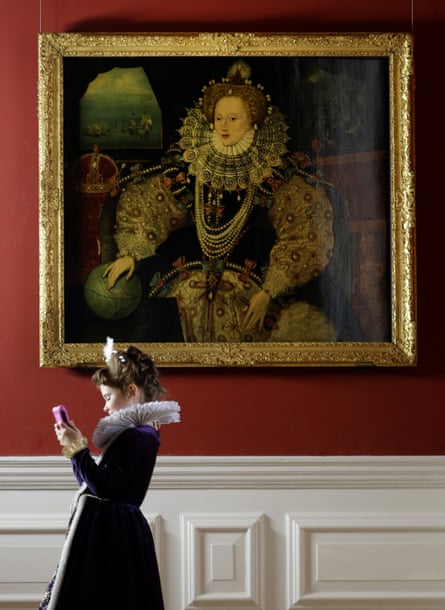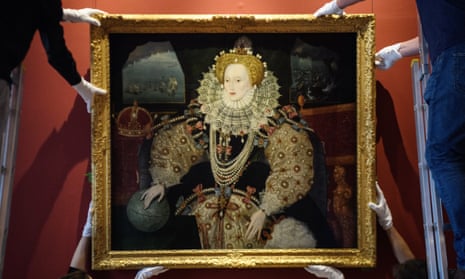One of the most recognisable portraits in British history is returning to public view transformed after a six-month restoration project to remove centuries of retouching, grime and varnish.
The Armada portrait of Elizabeth I was owned by Sir Francis Drake and passed down through his family before it was acquired for the nation last year following a £10.3m fundraising campaign. It is one of three surviving versions of the famous painting.
Christine Riding, head of arts and curator of the Queen’s House in Greenwich, said it was only now, after the restoration, that the true power of the portrait could be seen.
“You can read the painting better; it is more spectacular and, actually, you are now looking at something which is more akin to the impact it would have had in the Elizabethan period.”
The conservation was carried out by Elizabeth Hamilton-Eddy, senior paintings conservator at Royal Museums Greenwich. She was given a separate studio and the opportunity to work on the painting with no other work distractions.
“I was able to sit and concentrate on this one marvellous painting for a full six months,” she said. “It was wonderful – the opportunity of a lifetime.”
Hamilton-Eddy said there were two distinct layers of varnish that needed removing. The original varnish, which had naturally yellowed, and then an opaque brown varnish, which had been applied by someone to give the painting a more antique feel.
It is the brightness and the whiteness of the restored painting that is so striking.

The Armada portrait commemorates the most famous conflict in Elizabeth’s reign, the Spanish Armada’s failed attempt to invade England in 1588. Its artist is unknown.
It is considered one of the most important paintings in British history – a staple of school textbooks and the inspiration for many film and stage portrayals of Elizabeth.
After it was acquired, it went on public view for a short time before being taken away for the restoration.
Hamilton-Eddy began by doing pinhead-sized “nibbles” into the painting. Riding recalled going to see her “and we couldn’t believe it … it was literally a brilliant white ruff, it was absolutely incredible. At that point we knew that just simple varnish removal would transform the way the painting looked.”
As well as the dramatic cleaning, paint analysis of the two seascapes behind Elizabeth has detected the shade Prussian blue, which means they were repainted in the early 18th century, probably around 1710.
Riding said that repainting underscored the significance of the image in terms of national identity and power.
The work was acquired thanks to a £7.4m grant from the Heritage Lottery Fund, and a public appeal launched with the Art Fund, which raised £1.5m.
The portrait goes back on public display, in the Inigo Jones-designed Queen’s House in Greenwich, on Friday 13 October.
